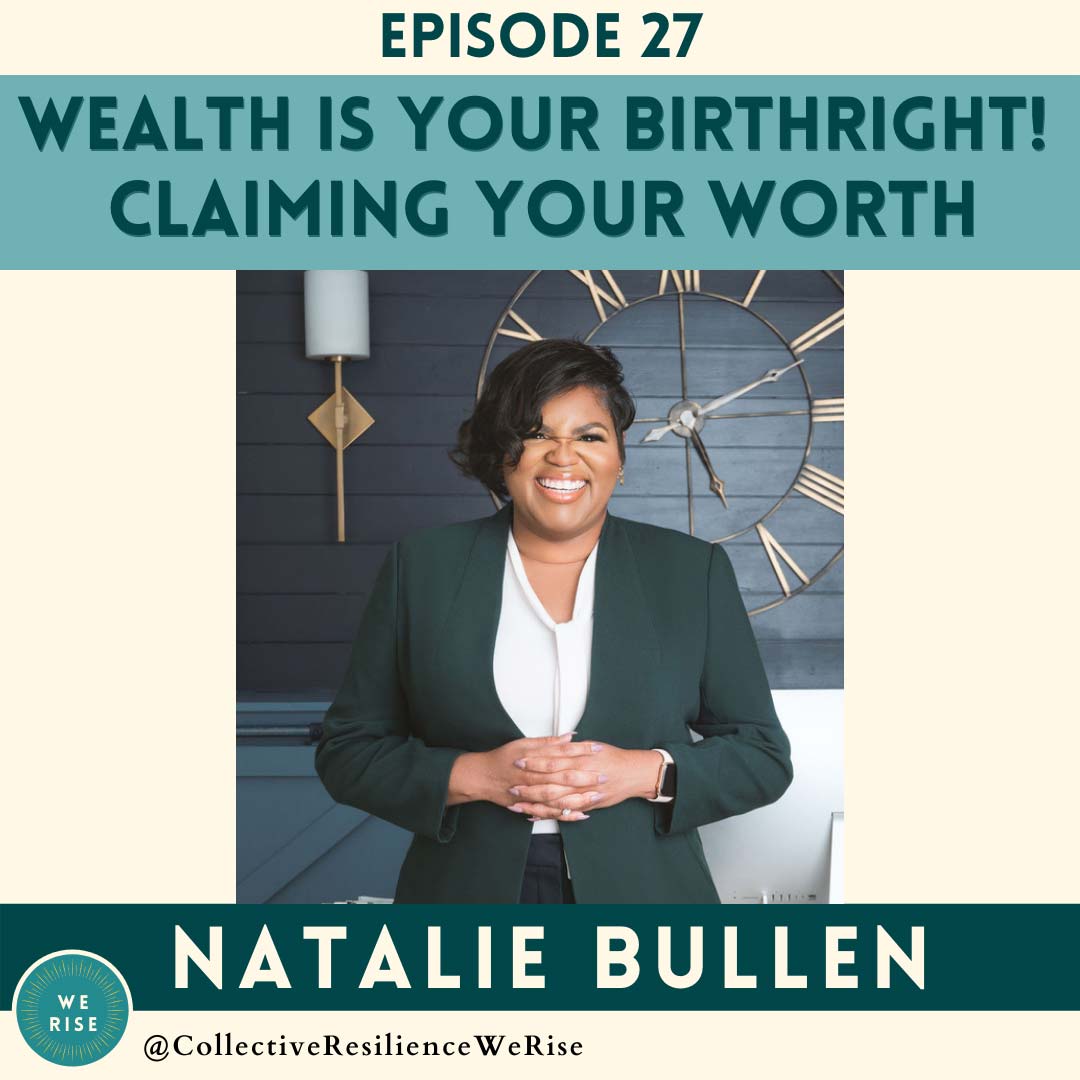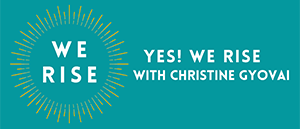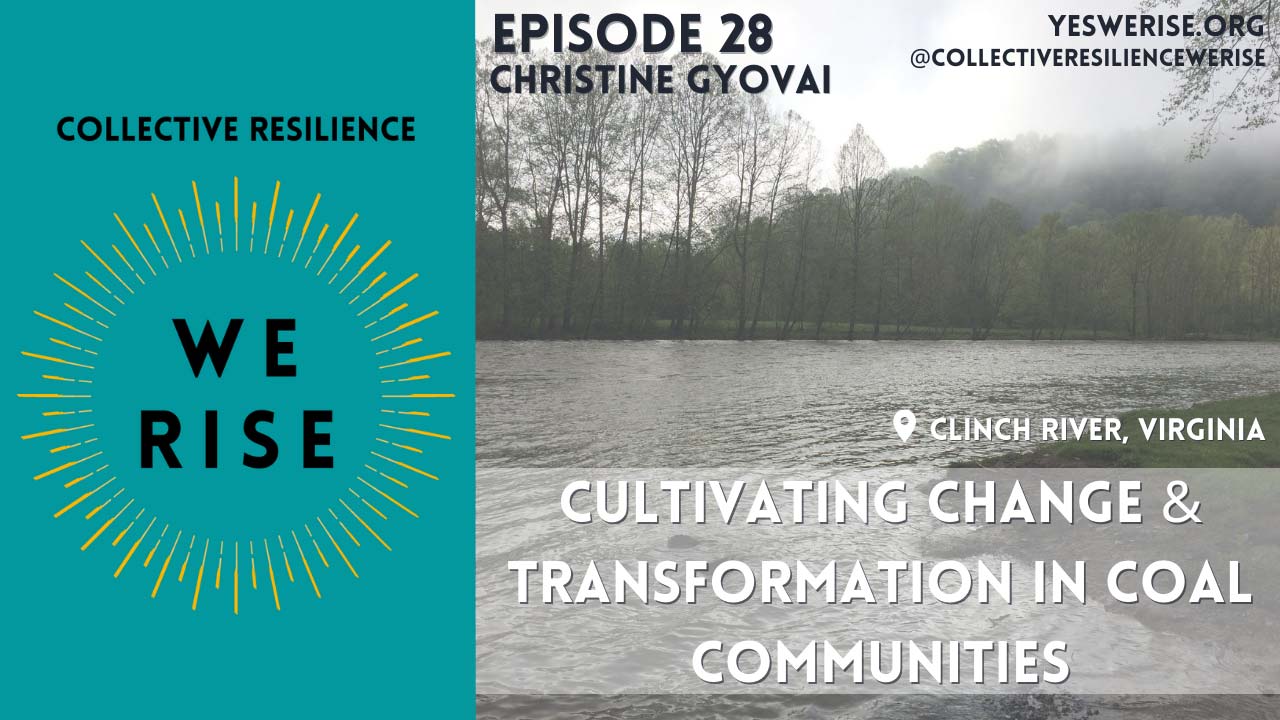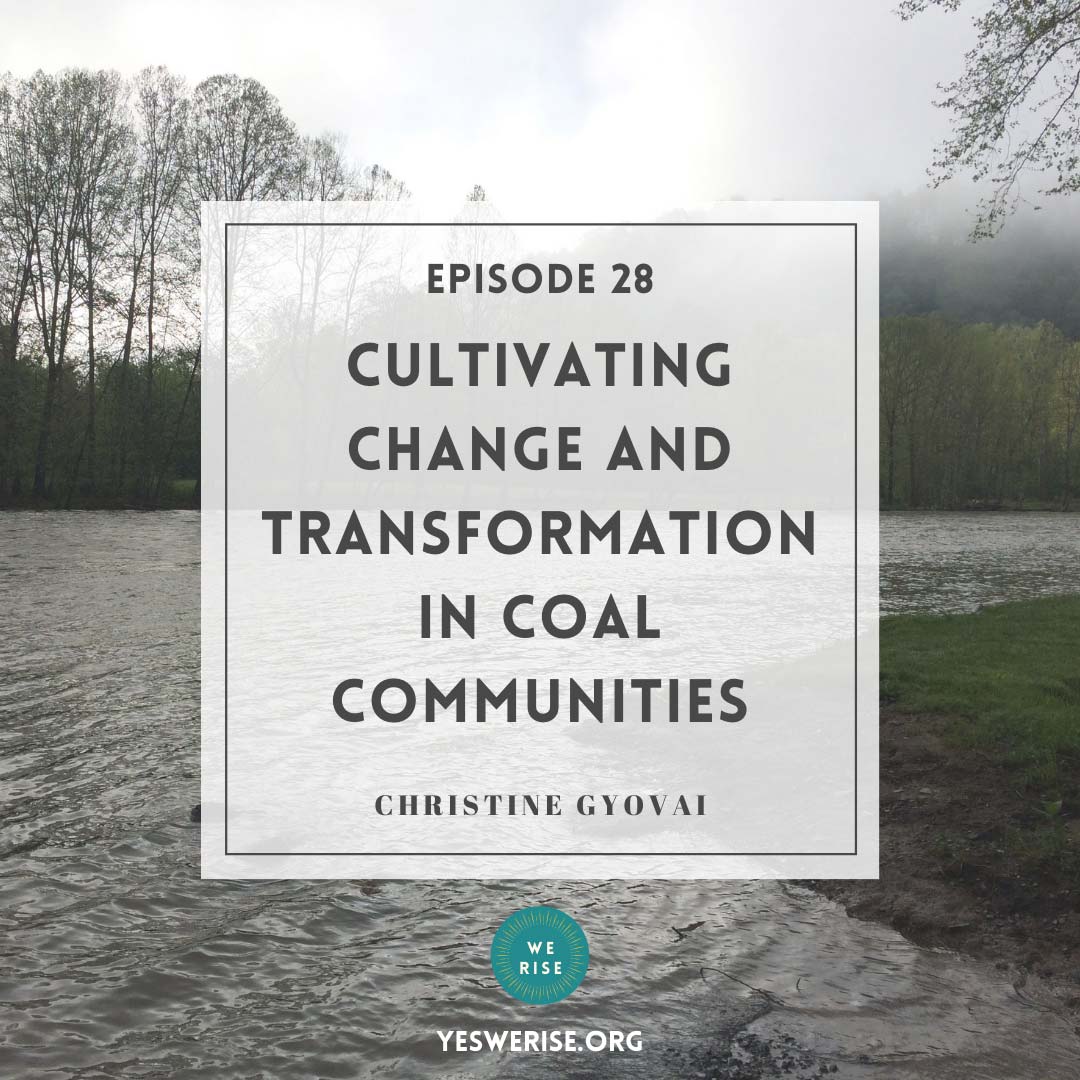
Episode 28:
Cultivating Change and Transformation in Coal Communities
Listen to the podcast on your favorite platform:
Apple Google Play Stitcher Spotify Amazon Music
Download the show Notes
find this episode on youtube
Change is often sparked by inspiration: seeing what others have done, especially in peer communities. People see that when someone looks like them or lives in a place like theirs, and has created real, true and lasting change — change that will allow their granddaughters and grandsons to thrive — they begin to imagine what might be possible in their own communities. No longer waiting for someone else to come and save them, they realize they are the ones they have been waiting for. But what creates that spark? What creates that inspiration? Learning through stories and examples, feeling a sense of agency and belonging, and getting fired up to kick ass creates that spark.
At the same time, we have to recognize and grapple with the fact that there are many challenges today facing communities in the United States and around the globe. Many communities are sinking – literally and figuratively. Support structures that have held communities in place for years are disappearing – from a tax base centered on fossil fuel production, to shorelines eroding, to the loss of younger generations who search for jobs or education away from their homeplace, communities are changing at an unprecedented rate. New ways are needed to create life systems of support for communities and regions.
Much of our work at our firm Dialogue + Design is based in central Appalachia where the economy was built on coal mining and production in many places. We’ve seen time and time again that women are leading and transforming communities in Appalachia and beyond.
Community leaders – again, particularly women – need to hear how others like them have created change both in mountain communities and around the globe, forging a path to resilience and to the future they want to see. They need to learn about the struggle that others have gone through, and how they transformed through the struggle: that going through the struggle itself yields the key to transformation.
Drawing from the lessons of ecological, economic and social resilience, what truly builds community resilience is learning to grow and adapt from a shock – and not just recover or bounce back, but to bounce forward. Where communities have looked at what has and hasn’t worked and to learn from losses, they grow their capacity to come back stronger. This is how communities bounce forward – they create a space to gather as a community, envision the future they want to create, see what is working and what isn’t, and then work to make that vision a reality.
This can’t be learned in a vacuum. This can’t be done alone. Inspiration for action comes through stories, through building connections where connections don’t yet exist, and by building relationships, trust, and ultimately a transformed community.
I’ve worked on a number of professional research projects including regional- and national-scale studies of how to create a just transition, or equitable change in communities, based on new, local, and sustainable economies, and I’ve had many personal conversations and in-depth interviews in coal communities. All have pointed to the same need: for local leaders to create change based on ideas from their own communities.
We are at a unique time in our history as COVID-19 collides with the collapse of the coal and fossil fuel industries. There has never been a more urgent time to share ideas, strategies and stories about how to build resilient communities, particularly in those communities where the economy has been based on resource extraction.
The effects of economic uncertainty, war, COVID-19 and climate change underscore the need to build a more just and sustainable future. According to UNESCO, “As [cities] manage their immediate response to a COVID-19 pandemic and are looking ahead to plan and resource long-term recovery efforts, there is an opportunity to transform [cities] in meaningful ways that not only protect vulnerable people from immediate threats but also build resilience for the looming climate crisis and other emergencies.” We need to build upon this unique moment in time, not to go back to pre-COVID-19 “business as usual,” but to learn and grow in an intentional, networked and systematic way that connects and rebuilds communities and regions for a regenerative future.
Change is happening in some communities, and their elected officials, activists, and economic development professionals have many tools in their toolkits. Leaders in struggling communities need access to these resources. They need to see how other communities are reinventing themselves from the inside out as people come together to create change, building on the ideas and vision they share, to make those ideas a reality.
In a time of increasing polarization and conflict, community leaders need to hear how others have forged a path to resilience in what felt like impossible times and through insurmountable obstacles. To create change, people need to feel like they belong and that they are part of a growing movement. They need to know their voice matters and that they have the inspiration, agency and ability to transform their communities. They are the key to a resilient future.
We are the ones we’ve been waiting for
Though communities are facing economic and environmental crises, change is also happening. Many communities are creating positive growth despite the numerous odds against them. We need to hear the stories of communities that have relied on fossil fuels as their economic base to reimagine themselves. Communities that have provided the lifeblood for others – with timber, coal, water, and other essentials – are not sure what is next for them. They often must actively choose whether to grow anew or languish and fade.
Communities whose economies are transitioning have been additionally challenged in recent years by an increasing sense of “othering.” In places where natural resource extraction drives the economy particularly, and elsewhere, communities have been intentionally maligned and ridiculed. People living in these communities feel a growing sense of isolation, of being singled out and siloed by those outside their communities. Community leaders are facing an increasing sense of despair as the effects of marginalization, diminished economic prospects, COVID-19 and other challenges bear down on them.
Particularly in coal communities, many community members also experience the long-term effects of working in oil fields, mining coal, and living next to power plants. People have faced health issues for far too long including black lung, asthma, and the sheer danger of the work, as well as systemic issues of environmental injustice with the working poor and communities of color bearing the brunt of the ill effects of fossil fuel production. It is time for a significant federal investment in these communities and regions, and to work toward a brighter future for all.
Change begins to happen through cultivating a sense of belonging, growing resilience, sparking inspiration and learning how to create transformation as individuals, communities and regions. The We Rise podcast includes stories of people – particularly women – transforming their communities such as Ivy Brashear of Mountain Association who writes about how Appalachian women have been a source of community leadership, innovation, and resilience in a recent essay in 100 Days in Appalachia. Ivy writes, “Without generations of mountain women piecing and holding it all together, there might not have been people remaining in Appalachia to whom we can tell these stories.”
Another amazing group working to change the narrative is the West Virginia Community Development Hub. The Hub shares about their ‘Redefined’ campaign, which uses research to disrupt stereotypes. “Last year, The Hub produced Redefined West Virginia, a storytelling series highlighting community teams across the state who are redefining what it means to be a resident in the Mountain State. The series reached more than 500,000 people and was proven to disrupt long-held negative stereotypes about West Virginia residents. The stories were rooted in Harmony Labs research about national perceptions of how people can break intergenerational cycles of poverty. Check out this co-authored post from Harmony Labs and The Hub about the research driving the campaign.
Over the course of the We Rise podcast, we have heard from guests whose work inspires and transforms, especially at the community level. This community-driven work is apparent in the towns of Southwest Virginia where our firm Dialogue + Design has worked for over a decade. Here, a history of the declining coal industry has led to major shortfalls in the funding for municipal needs, infrastructure, and schools. Being resilient through the decline of the coal industry means creating new economic sectors and engines. It means looking at the impact on more than just direct workers, but entire communities. Resilience is about creating possibility and opportunity in communities that have consistently faced hardship and loss.
Beyond these historic legacies, resilience in the small towns of Central Appalachia has been demonstrated through the creation of community-centered programs and a passion to create a place that past, current, and future generations are proud of. Community leaders in the Southwest Virginia towns of St. Paul, Dungannon, and Dante wanted to create lasting change, and they did so by acting on the amenities that their towns had to offer. The three towns demonstrate that sustainable change is rooted locally, with community groups and leaders being the best advocates for their own lives.
To hear these inspiring community leaders share their stories, check out some of our previous episodes, which we’ll link to in the show notes.
- Episode 4 – For A Person To Rise Up, Featuring Lou Ann Wallace
- Episode 9 – Letting Love Lead with Mayor Horne of Dungannon, Virginia
- Episode 13 – Rekindling the Past and Keeping Hope Alive with Cat and Pat in Dante, Virginia
- To learn more about how communities across the region are creating lasting change, listen to Episode 15 – On Rising and Resilience in Central Appalachia with Christine Gyovai.
In an earlier episode, you’ll hear about St. Paul, Virginia.
From Southwest Virginia, Lou Ann has spent twenty years focused on empowering the region to thrive environmentally, as a community, and economically. Lou observed communities wanting the government, coal companies, or corporate businesses to be the catalyst for change, but she promotes a different way, one grounded in community autonomy. Lou Ann said in our conversation that as our culture has shifted toward big business and a corporate economy, there has been a loss of entrepreneurs and small business owners. This trend is changing now though Lou Ann works to help communities revitalize downtown communities. This requires dedication, planning, and a willingness to fail and keep trying. It is important to find the individuals within a community that have the desire, vision, and bandwidth to bring about change.
Lou Ann says that creating a flourishing community means capitalizing on the assets of that community. For towns in Southwest Virginia like St. Paul and Dante, this meant utilizing natural assets, rivers, mountains, and outdoor recreation as means for economic growth.
Lou Ann says, “It’s not written down in a plan anywhere but along the way, when you start seeing successes happen, things come out of other things. Growth happened because of other growth.”
Not far down the road in Dungannon, Virginia, Mayor Horne shares how community members have joined to revitalize Dungannon — often through working regionally, creating safe and enjoyable spaces for youth, and pursuing growth through networking. Coming up against struggles and hardships, Dungannon has shown resilience and perseverance in creating new opportunities and generating the support they need to transform their town.
The community around Mayor Horne and her team members have been a core component to keeping her vision alive for Dungannon. Her community leadership team feels the same drive to create change and see growth happen in their town, noting that even the smallest changes add up. Mayor Horne draws inspiration from watching the revitalization of other towns throughout Virginia. Dante’s new playground, Cleveland’s first campground, and St. Paul’s new hotel and Sugar Hill Brewing Company all give her hope as she continues her important work in Dungannon. An advocate for networking, Mayor Horne understands the importance of connecting with other towns, listening to stories of resilience, and tapping into the “information highway” as she calls it to gain tools and resources.
Mayor Horne says “I feel like we’re growing, and we’re gonna keep growing. We’ve got a good group of people in here that work together now and we all get involved together. If we’re out cleaning, we’re all down there cleaning. I think I just get excited thinking of what it’s gonna be, eventually when we get more businesses in. I think Dungannon and the people are gonna see the growth of it and what’s happened has made a difference in their lives, but mostly in the childrens’ lives because they have a place to look forward to, and a future to look forward to.”
And in Dante in Southwest Virginia, Pat and Cat have a passion for revitalizing the community-oriented town of Dante and are a stellar example of the optimism it takes to rekindle the past for the youth of tomorrow, finding hope in others’ success, and the value of community. Pat and Cat have observed other towns in Southwest Virginia creating something new and beautiful and flourishing as a result. One hope that Pat has is to revitalize the train tracks in town to bring more tourists into the area. She envisions families riding into Dante, hiking and exploring the area, and then continuing on, enjoying the views of waterfalls and the mountains. Cat and Pat say it would be something fun for folks of all ages… From the Spearhead Trails coming in from St. Paul to the waterfalls in Cleveland, and the Clinch River running through, Dante offers variety and beauty for anyone to enjoy, and it is part of what brings Pat and Cat hope for the town’s future. They draw their inspiration from surrounding communities such as St. Paul, who have been through the process they are currently going through. They say the work is hard, and at times the motivation may fizzle out, but it is important to keep pushing through to make their vision for Dante a reality. Going to other towns and attending their meetings has also been supportive in providing resources and tools they didn’t know were available to them, including a grant opportunity.
Cat says, “I think you really have to have a vision that you want things to improve. And if you don’t have that vision and keep pushing, it’s very easy to get aggravated and give up. And been there, done that, but it’s harder, it seems like, to get people interested. They just come and do things for a while, and then they kind of fizzle out, don’t come back and think it’s just hopeless. But you just have to keep going on. St. Paul’s a prime example of that. They’ve really pushed hard down there and done a tremendous job. And things are really picked up in St. Paul; the nice hotel, the brewery, a nice restaurant and other little shops that popped in. And it’s just a real nice place. And I’m hoping that we can do that in our area.”
And Pat adds, “My advice would be: get involved with other communities. Help them. And then hopefully they’ll come back and help us. The more you give, the more you get. That’s my slogan.”
We love sharing the stories of community leaders like those in St. Paul, Dungannon and Dante who are forging a new path toward creating resilience and true transformation. One person at a time, one community at a time, one region at a time, the quilt of transformation can grow piece by piece until resilience becomes the norm instead of the exception. Together, we rise.
We want to give a special shout out of thanks to leaders in each of these communities for sharing their stories, and to Lea Taylor of Dialogue + Design for her help in developing this episode.
Links/resources mentioned
Learn more about some of the towns and opportunities inspiring this episode: Dante, Cleveland, St. Paul, Dungannon, Spearhead Trails, Clinch River
Check out the collaborative project 100 Days in Appalachia
Read the article “When Data Met Art: Redefining Narratives of Poverty Through Research-Driven Storytelling”
The Yes! We Rise podcast is produced by Dialogue + Design Associates, Podcasting For Creatives, with music by Drishti Beats.
Follow Yes! We Rise on Facebook and Instagram.
Please rate, review, and subscribe to the podcast so we can continue spreading our message far and wide. Find our email list at the website: www.yeswerise.org.
Thanks for listening.
Don’t miss an episode — follow us on Spotify and subscribe via Apple Podcasts, Stitcher, Google Play, or Amazon Music and please leave us a review wherever you listen.
The Collective Resilience: We Rise podcast features solutions-seekers, change-makers, and those creating a resilient future. We share stories and strategies to inspire action to build resilience and community transformation. To create change, people need to feel like they belong and that they are part of a growing movement. They need to know their voice matters and that they have the inspiration, agency and ability to transform their lives and their communities. They are the key to a resilient future.
From the Navajo Nation to the mountains of Appalachia, incredible work is being done by community members and leaders. Change is often sparked by inspiration: seeing what others have done, especially in similar situations and places. People see that when someone looks like them or lives in a place like theirs, and has created real, true and lasting change, change that will allow their granddaughters and grandsons to thrive — they begin to imagine what might be possible for them. No longer waiting for someone else to come and save them, they realize they are the ones they have been waiting for. But what creates that spark? What creates that inspiration? Learning through stories and examples, feeling a sense of agency and belonging, and getting fired up to kick ass creates that spark.
We Rise helps community leaders and members learn to forge a new path toward creating resilience and true transformation. One person at a time, one community at a time, one region at a time, the quilt of transformation can grow piece by piece until resilience becomes the norm instead of the exception. Together, we rise.
Jump to:
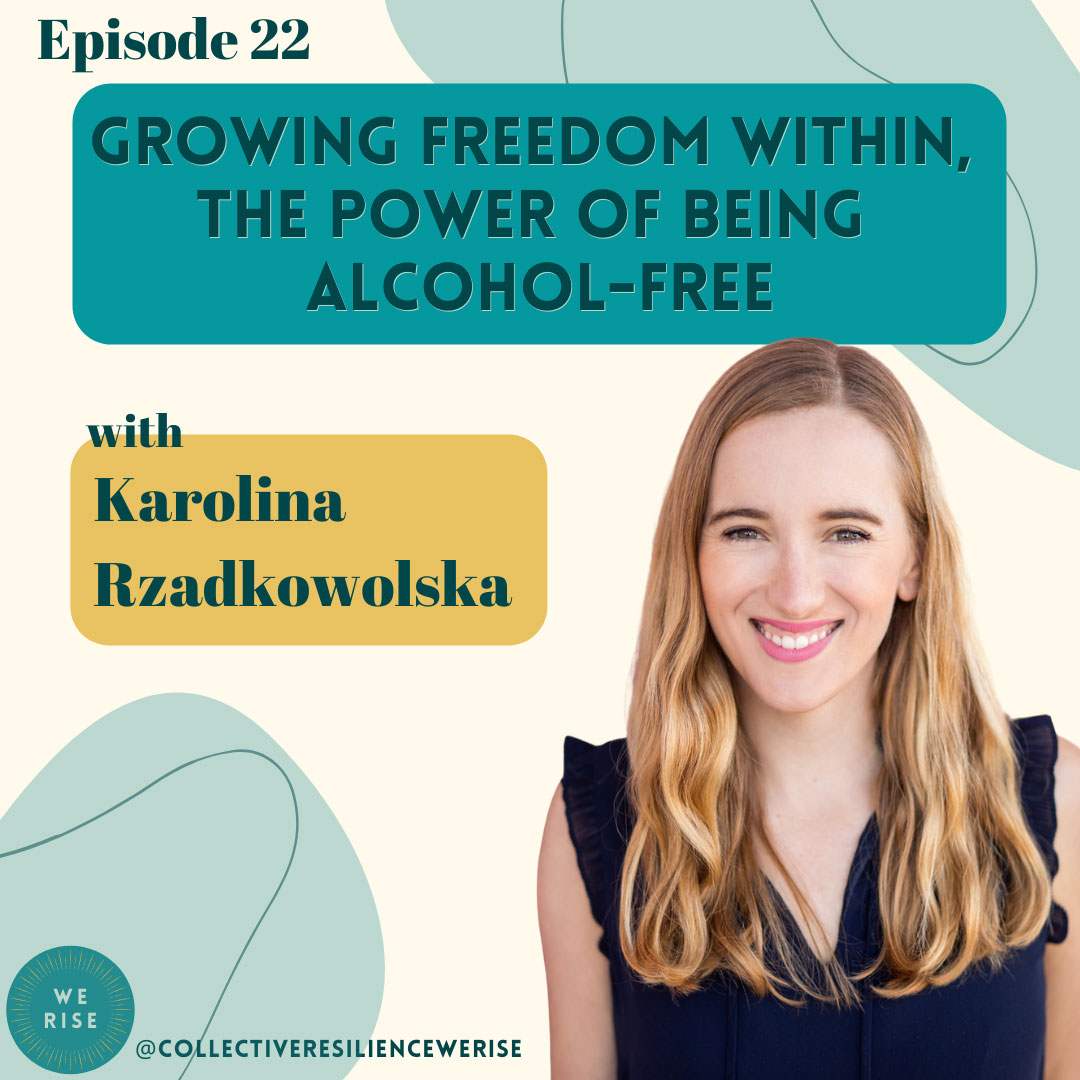
Episode 22
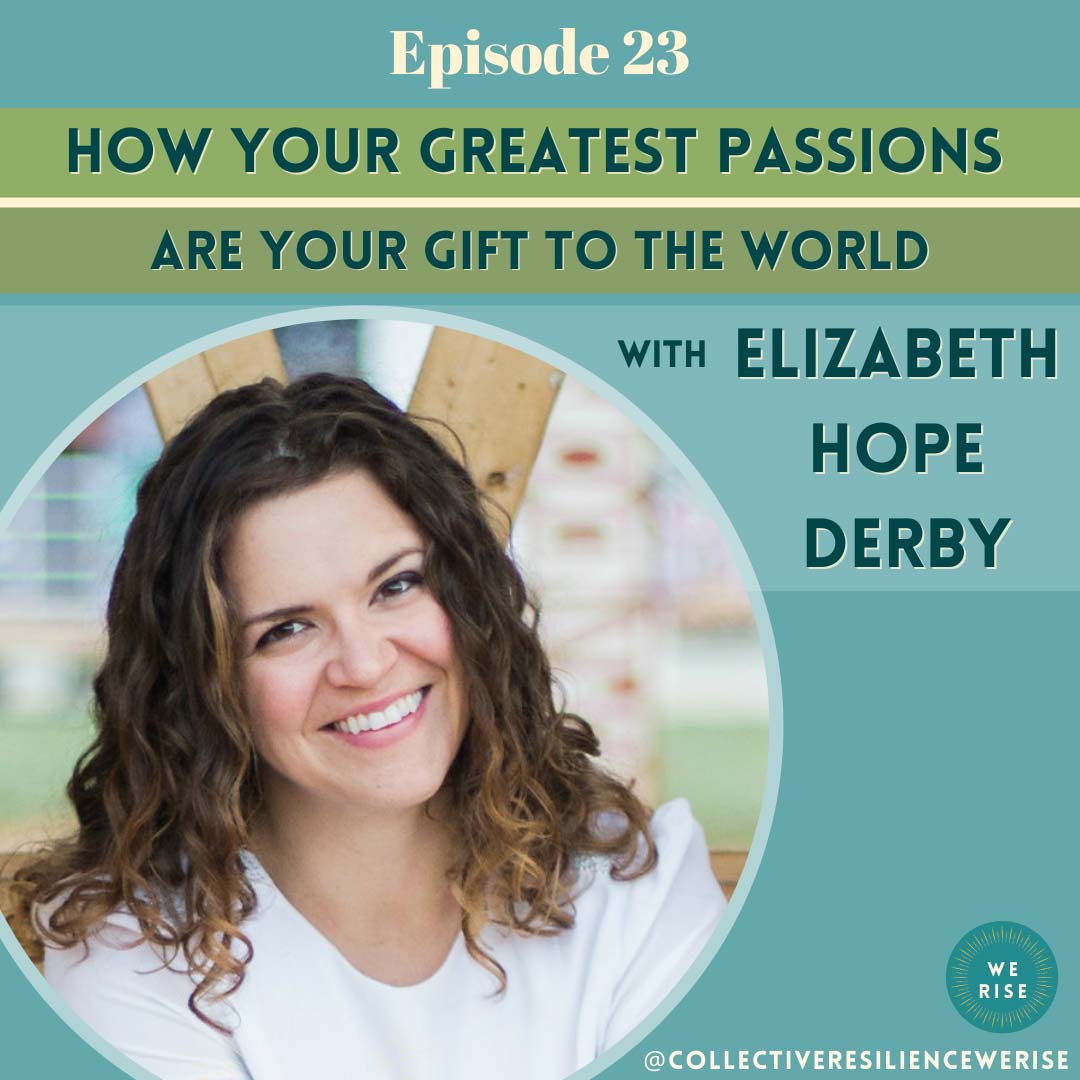
Episode 23
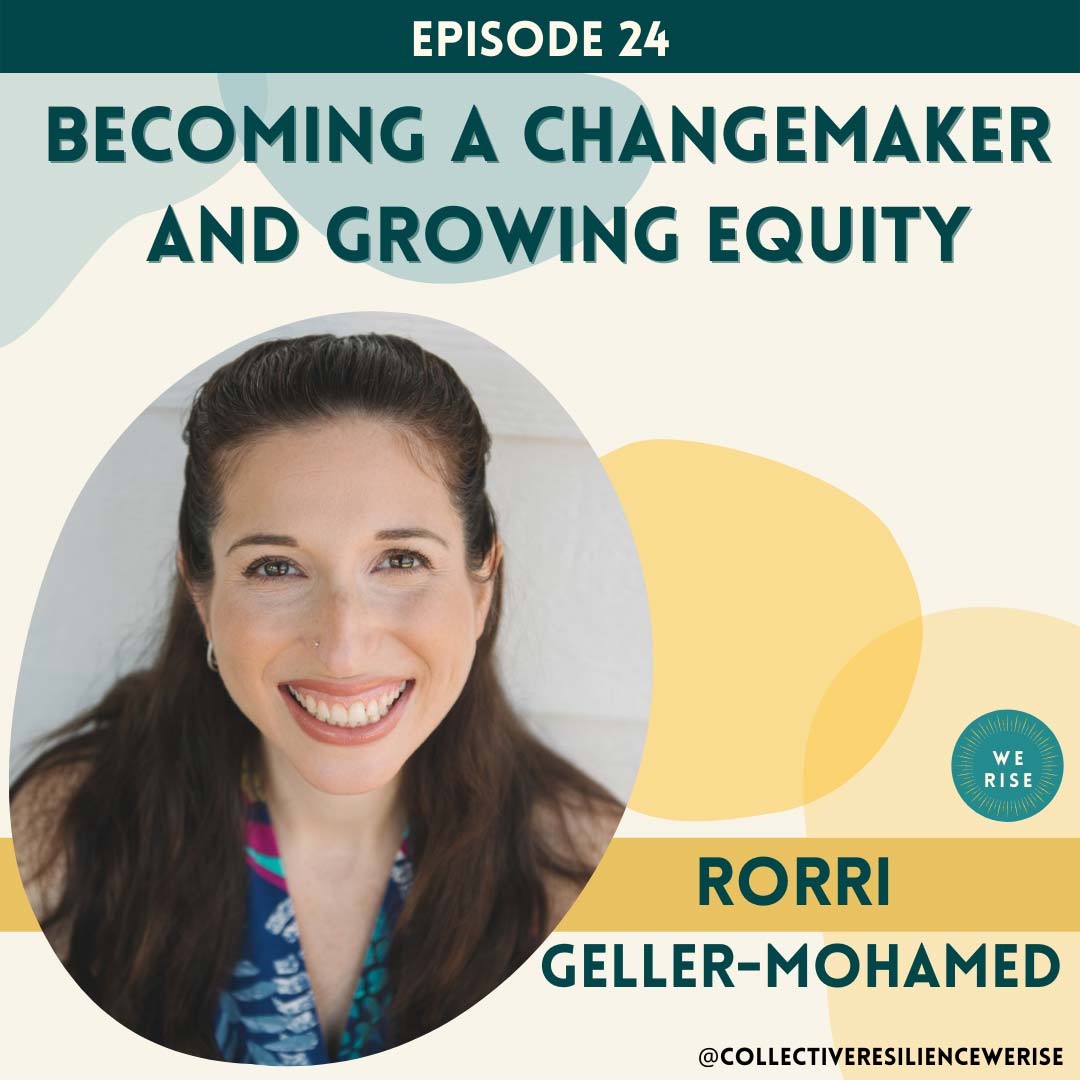
Episode 24
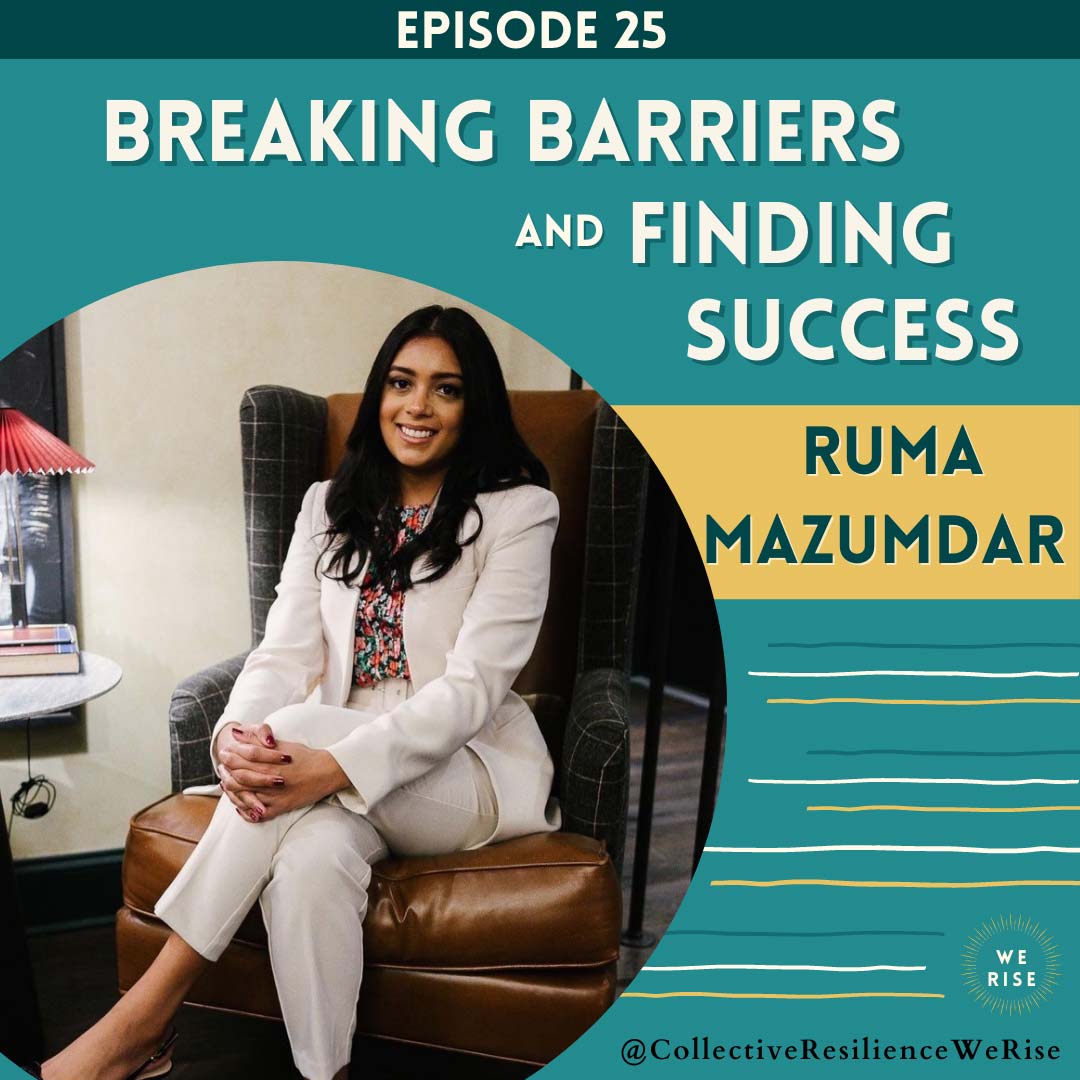
Episode 25
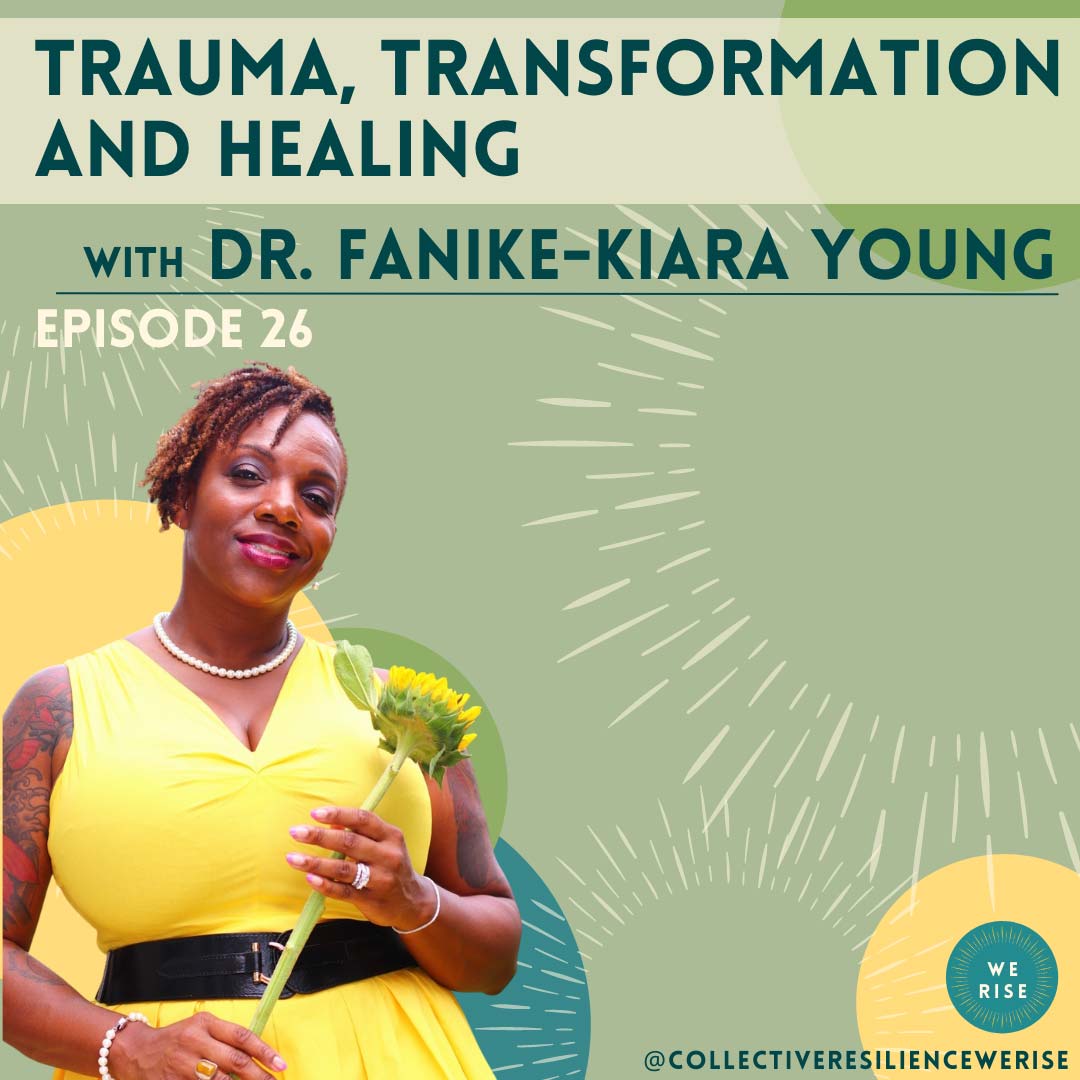
Episode 26
